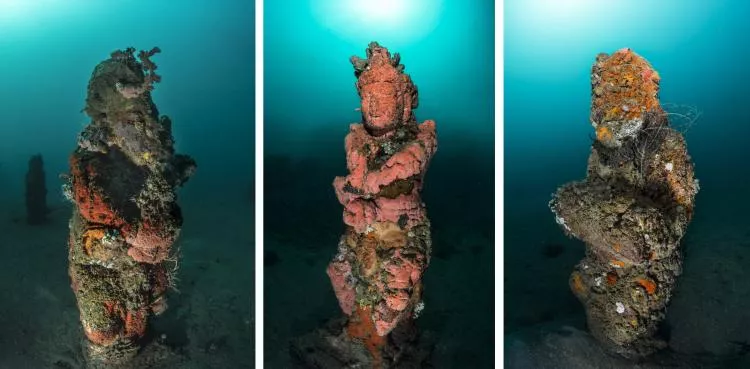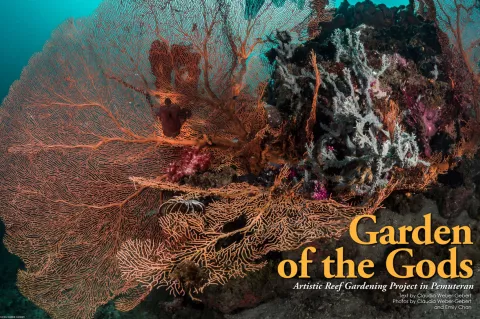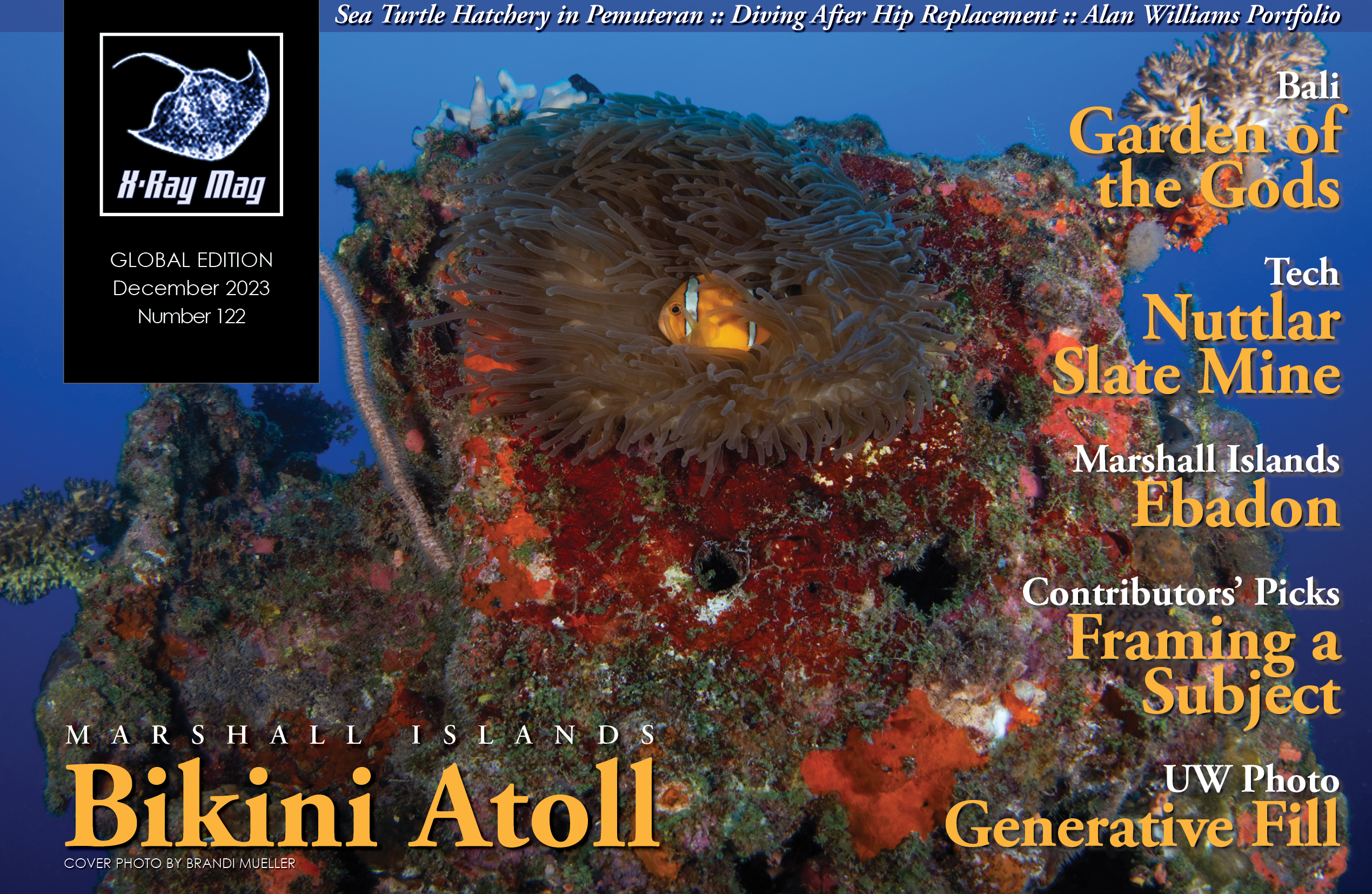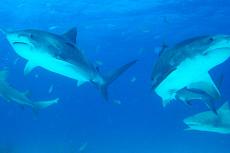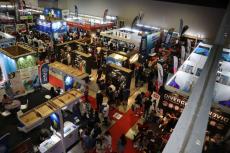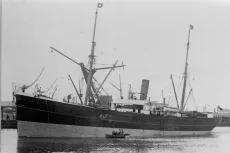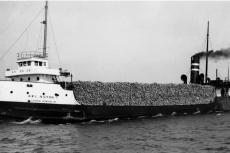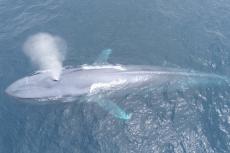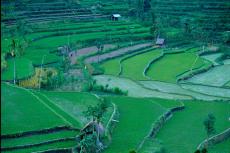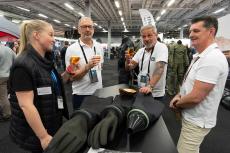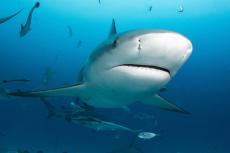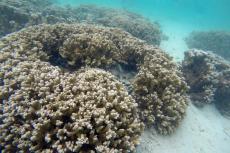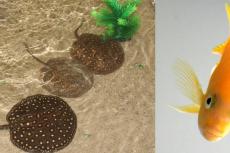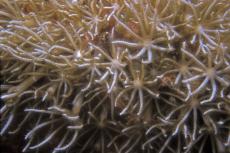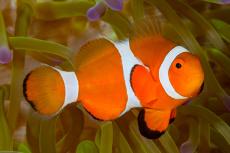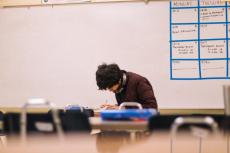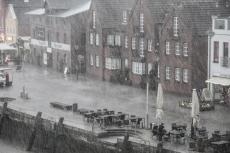Established in 2014, Garden of the Gods is the latest in a series reef gardening projects in Pemuteran, Indonesia, which have been running since 2000, and is one of the largest in the world, in terms of area. Claudia Weber-Gebert gives us an inside look.
Contributed by
The founders of the project, Cassandra Dragon and Chris Brown, told me about the project in detail. In 1990, Chris, who is an Australian, came to Bali, making a new home for himself in Pemuteran and establishing the Reef Seen Divers’ Resort. At that time, the reefs had already been partially destroyed by dynamite and cyanide fishing for aquarium fish. The abundance of fish decreased, but it was not too late.
Chris convinced local fishermen that fish on a plate was less profitable in the long run than live fish, which delighted diving tourists and created jobs in the tourism industry. In cooperation with the local fishermen, residents and authorities, Chris and his team were able to stop cyanide and dynamite fishing and got things rolling for reef restoration, creating a win-win situation for everyone… and ultimately, also for nature. (Read an excerpt about the Pemuteran Artificial Reef Project in Bali from the Global Coral Reef Alliance at globalcoral.org.)
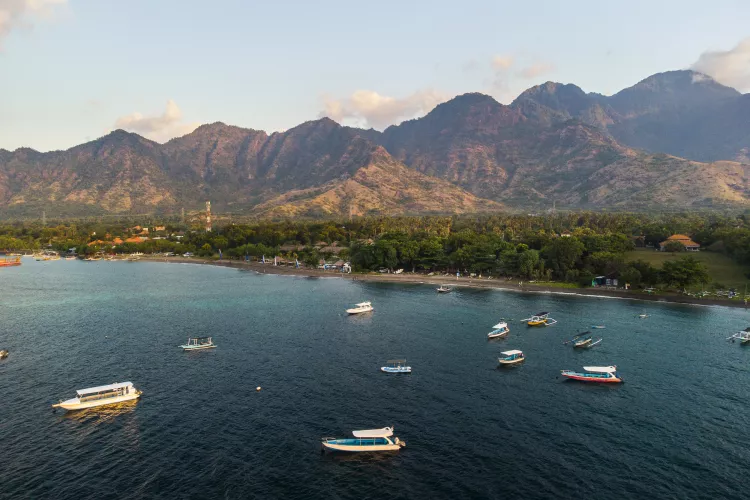
As the founder of the pioneering dive centre in Pemuteran in 1991, Chris is not only involved in reef gardening projects but has also been in charge of a sea turtle hatchery station, a nonprofit project, since 1992. He has organised and set up a number of projects since then, and these can also be dived. Here too, one can observe the success of these sites, such as the Bio-Wreck, which was installed in 2005 and is now in no way inferior to a natural reef. When I visited, I was overwhelmed by the abundance of fish around this artificial reef!
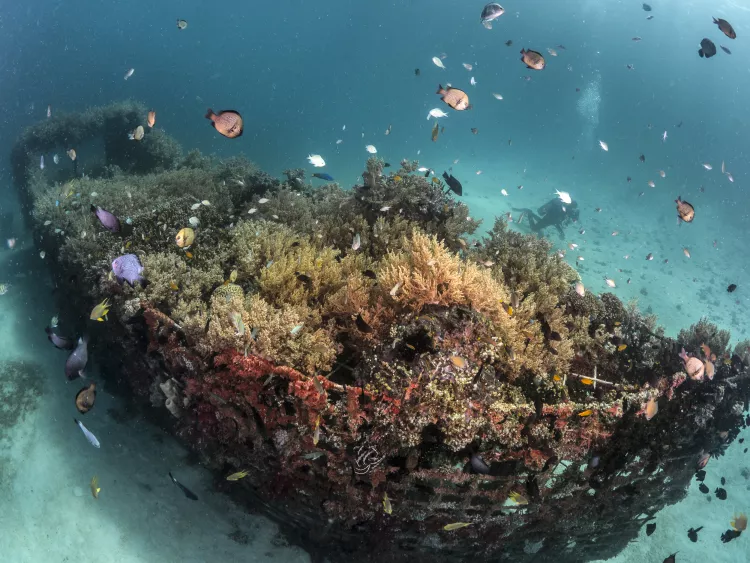
Back to the Garden of the Gods
The Garden of the Gods site was created in 2014 to take the pressure off the still fragile reefs and create a dive site that included both reef construction and a Balinese temple park, which would be popular with tourists—providing diving and sightseeing at the same time, so to speak.
The inspiration for idea came from Cassandra Dragon, who worked diligently to open doors for Chris to construct the Garden of the Gods. Since it was a nonprofit project, financial support had to be sought.
In the project plans, nine statues of Balinese gods, including Brahma, Rudra, Mahadeva, Sangkara, Vishnu, Sambhu, Iswara and Mahesora, would be arranged in a circle, according to Balinese custom. The arrangement corresponded with the eight wind directions, according to the wind rose of a compass. In the centre was Shiva sitting on a turtle—watching over the sea turtle hatchery.
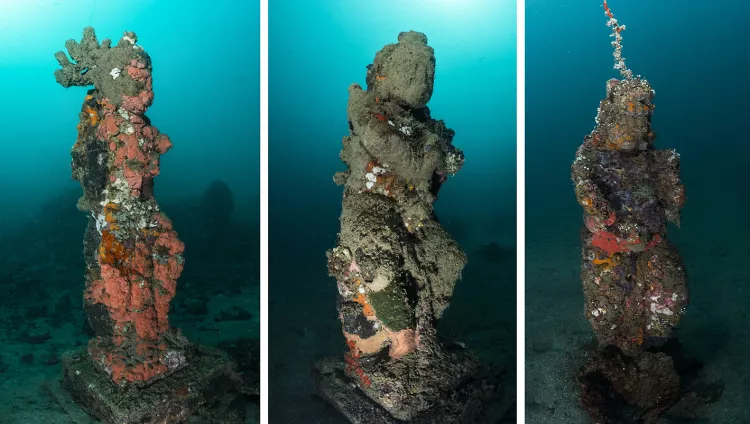
In addition, statues of musicians, Balinese dancers, turtles, lanterns, fountains and fish would also be set up, so a lifelike scene would be created. The entrance, of course, would be flanked by two guards and there would also be two benches—just like in a Balinese temple park.
After the plan was drawn, a model was set up in front of the Reef Seen Resort, to better represent the project and find sponsors. The project was financed and implemented with donations and the help of friends.
The statues were made by a traditional Balinese stonemasonry, from a mixture of cement and local sand from Ubud, as well as an aggregate to make the mixture waterproof. The surface of the cement mixture was relatively smooth but not very hard. This was not so with the benches, fountains and lanterns, which were carved from black lava rock. Their surface was porous, but very hard.
Installation
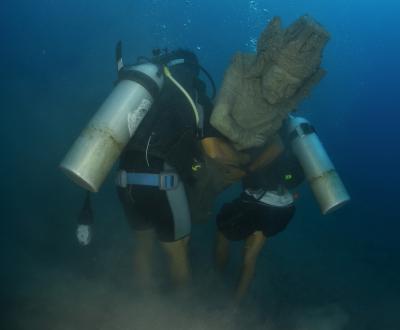
After all the statues had been transported to Pemuteran by truck, the construction of the garden could begin. The statues were inaugurated in an official ceremony with a priest and local authorities. Only then could they be sunk on the spot, with a great deal of effort. It was not so easy, because the statues had significant weight. In addition, they had to be set up according to the schematic plan. So, Chris built a platform with an opening in the middle and a pulley on top.
First, the terrain was surveyed, and the positions were marked; then, the buoys were added. Loaded onto the platform and towed to the site by boat, each individual statue was then placed on a stable base, exactly as the plan stipulated.
It may sound easy, but it required a lot of manpower. Since water is known to have no beams, and the statues hung on 20m long straps, divers had to be deployed on the seabed. All the employees of the dive centre from the Reef Seen Resort took part, as well as divers and helpers who were friends. It took four days to set up all the statues.
The photos in this article, showing the installation of the statues in 2014, were provided by Emily Chan, a friend of Cassandra, who documented everything. See the video about the project and the construction underwater at: youtu.be/wrzgnpCYfII?si=RbEDTze4-cBrV_WN.
Successful results
The effort was definitely worth it. Many divers have already gotten to know and love this dive site. A dive at the Garden of the Gods is a leisurely stroll through a tranquil temple complex, so to speak. Starting at the buoy at 8m and diving down to 22m, the park is accessible to all visitors.
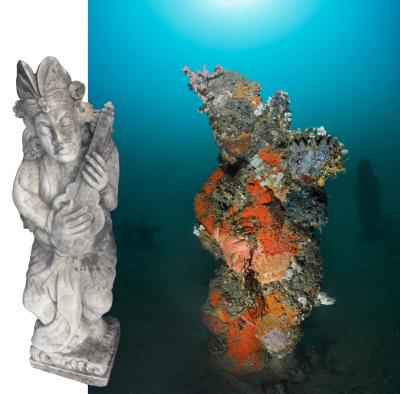
A sea turtle statue leads to the entrance with the two guardian statues, and from there, divers can explore the rest of the statues during the dive. At the end, you can continue diving towards the beach or surface back to the buoy.
Marine life
With the passage of time, of course, the statues no longer look like how they did on the first day of their installation. Some are hardly recognisable. Overgrown with sponges, corals, mussels and algae, they offer homes for many small fish. This, in turn, attracts larger fish, and rays fly across the sand amongst the statues, as shoals of fish swim by overhead.
The variety of marine life that has emerged on and amongst the bare statues, within just nine years, is remarkable. The artworks have been reworked by Mother Nature and are now truly colourful. In varying forms, the Balinese gods now stand serenely in their garden park, with their stable bases covered in sediment. See my video showing the changes to the statues at: youtube.com/watch?v=teb10uVzTys.
From time to time, the statues have to be straightened, because fish undermine them, and then they threaten to topple. And yet, one has the impression that the energies of the gods are still there and at work—it is a holy place… a temple.
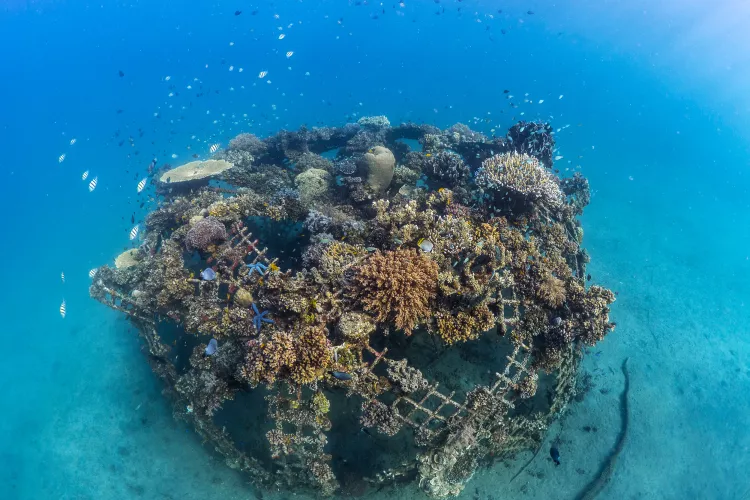
Future plans
With all these projects, Chris and his colleagues have proven that reef gardening can work. So, what plans are there for further developments at Reef Seen Divers’ Resort? One important goal that all we divers can help with is restoring reefs that have been damaged. But how can one do this? This is what Chris wants to focus on, going forward.
He wants to train divers on how to reintegrate fallen coral fragments back into the reef, so they can continue to grow there. Because if these fragments remain on the sea bottom, covered in sand, they will die off eventually. But if one knows what one can do to save them, these pieces of coral can survive.
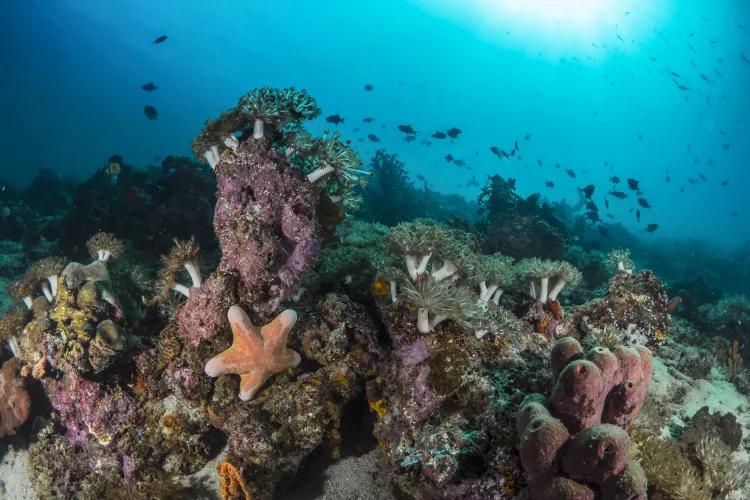
Reintegrating reef fragments
It is actually quite simple. I watched it being done, and also tried putting a fragment back in the reef myself—and it feels good! Anyone interested in learning this can contact Chris or his staff and book a workshop in Pemuteran. After the workshop, you will be able to help reintegrate broken corals back into the reef, worldwide. In my opinion, this is the duty of every diver!
The Reef Seen Divers’ Resort has eight rooms, making it ideal for small groups. Alongside the workshop, you can also admire the beautiful reefs, dive at the current coral gardening projects, visit the sea turtle hatchery, sponsor a sea turtle and release it into the sea—and, of course, get to know Bali.
Chris is available almost every day for conversations about coral restoration and the development of the various conservation projects. On Saturdays and Sundays, young Balinese dancers train at the resort, and young musicians present themselves on stage in the garden. With Chris at the helm, there is always something going on at Reef Seen in Pemuteran! ■

